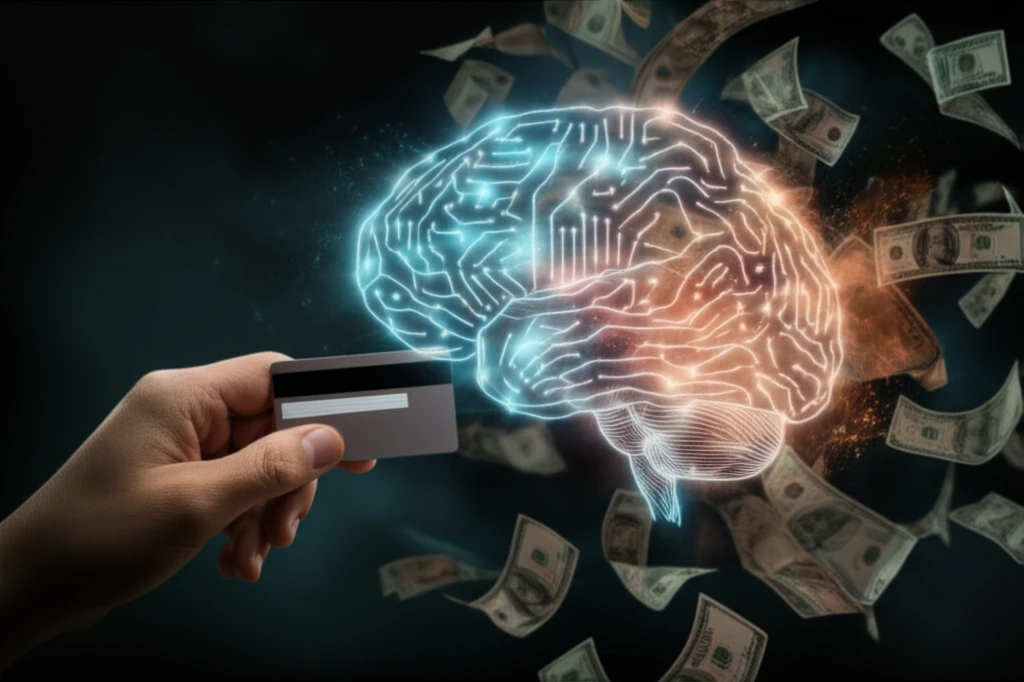
Unlock Your Patience: How Brain Stimulation Can Curb Impulsive Spending
"Can stimulating a specific brain region boost your financial self-control? New research reveals how targeting the prefrontal cortex can reduce impulsivity and improve decision-making."
We've all been there: the lure of instant gratification overshadowing long-term goals. Impulsivity, characterized by undervaluing future consequences, impacts our health, finances, and overall well-being. But what if we could tap into the brain's control center to curb these urges and promote more patient decision-making?
A fascinating area of research explores how contextual changes can significantly influence impulsivity. One of the most robust effects is the 'magnitude effect,' where individuals become more patient when the stakes are higher. Imagine choosing between receiving $20 today or $30 in a week, versus $2,000 today or $3,000 in a week. People tend to be more patient with the larger amounts, suggesting a shift in how our brains weigh immediate versus future rewards.
Now, scientists are digging deeper, examining the role of the dorsolateral prefrontal cortex (dlPFC)—a brain region associated with cognitive control—in this magnitude effect. By using targeted brain stimulation, they're uncovering how we can potentially enhance self-control and make better decisions.
The Brain's Impulsive Switch: How rTMS Works

Researchers at Stanford University used repetitive transcranial magnetic stimulation (rTMS) to temporarily disrupt activity in the dlPFC. rTMS involves using magnetic pulses to non-invasively stimulate specific brain regions, essentially 'dialing down' their activity for a short period. The study aimed to understand if the dIPFC plays a causal role in the magnitude effect.
- The Magnitude Effect Dissolves: Disrupting dIPFC activity with rTMS significantly reduced the magnitude effect. Participants became more impulsive overall, especially when dealing with high-magnitude choices.
- Control vs. Reward: The findings support the idea that the dlPFC-mediated control processes are key in modulating impulsivity, rather than simply altering how we value rewards. While areas like the striatum are involved in reward evaluation, the dIPFC appears to exert top-down control, influencing our ability to delay gratification.
- Challenging the 'Utility' Account: The study weakens the 'utility' model, which suggests that subjective valuation itself changes with magnitude. Because rTMS targeted the control center (dlPFC) and not reward centers, the results indicate that self-control, rather than altered valuation, underlies the magnitude effect.
Takeaways and Future Directions
This groundbreaking research provides compelling evidence that the dIPFC plays a causal role in the magnitude effect, influencing our ability to resist impulsive choices, especially when significant sums are involved. By temporarily disrupting this brain region, scientists demonstrated that cognitive control, rather than altered valuation, underlies the shift in patience we experience with larger rewards.
The findings challenge traditional economic models and open up exciting avenues for interventions aimed at enhancing self-control. Imagine a future where targeted brain stimulation or cognitive training programs could help individuals struggling with impulsive spending, addiction, or other decision-making challenges.
While further research is needed to fully understand the complexities of the dIPFC's role in intertemporal choice, this study offers a powerful glimpse into the brain mechanisms that govern our financial decisions—and how we might harness them to build a more patient and prosperous future.
